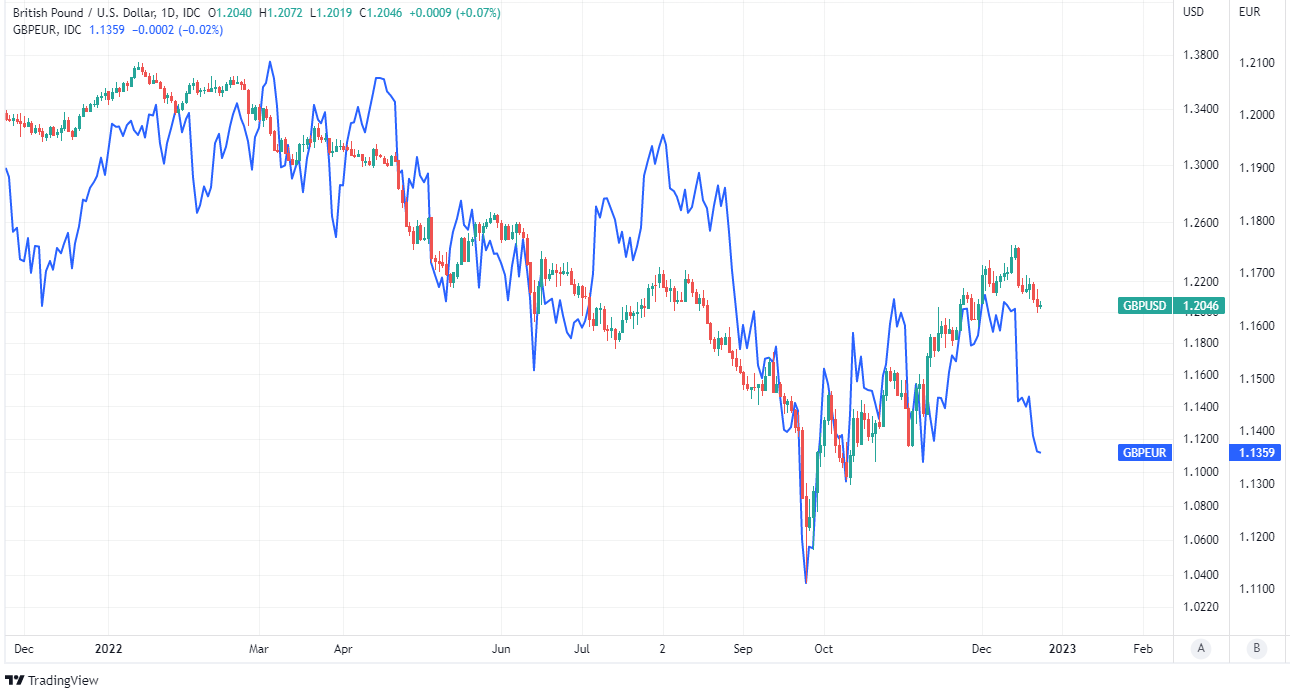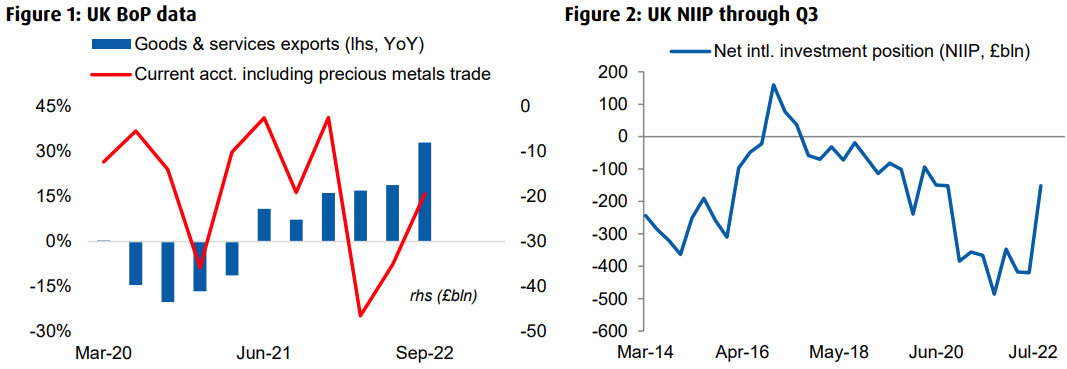Pound Sterling's Mini Budget Debacle: What the Capital Flows Data Says
- Written by: James Skinner
-
"We think the capital flows portion of the UK's BoP suggests that wide current account deficits may be more difficult to cover going forward — in the absence of adequate compensation for risk [higher interest rates]" - BMO Capital Markets.

Image © Adobe Images
The Pound was carrying losses against many currencies for the week on Friday and some of those followed the release of official data appearing to suggest a crisis of confidence in the UK last quarter and during the period in which the now-infamous 'mini budget' drove steep losses for Sterling.
Last quarter culminated in historic lows for the Pound relative to the Dollar and some other currencies following a 'mini budget' that was widely described at the time as having prompted a crisis of confidence in UK government authorities and the national finances.
"The UK's Q3 BoP data are a contrast between alarming and reassuring," says Stephen Gallo, European head of FX strategy at BMO Capital Markets.
"What is most alarming to us is that within the financial account, non-residents decreased their ownership of UK debt securities by £39.7bln, and equity and investment fund shares by £12.8bln during Q3," he adds.
Source: BMO Capital Markets.
Heavy selling of assets by foreign investors was not the only detail consistent with the idea of there having been a crisis of confidence because domestic residents also sold assets and moved capital overseas during the period.
The latter was the main reason why the UK's dependency on external finance appeared to shrink during the quarter.
"We think the capital flows portion of the UK's BoP suggests that wide current account deficits may be more difficult to cover going forward — in the absence of adequate compensation for risk [higher interest rates]," Gallo says.
Dependency on external finance reflects unsustainable government spending, among other things, and is often cited as why Sterling is a "risky currency."
Risky currencies tend to be more volatile and sensitive to changes in investor appetite for risk, and Sterling has been more volatile since the mini-budget.
 Above: Pound to Dollar rate shown at daily intervals alongside Pound to Euro rate. If you are looking to protect or boost your international payment budget you could consider securing today's rate for use in the future, or set an order for your ideal rate when it is achieved, more information can be found here.
Above: Pound to Dollar rate shown at daily intervals alongside Pound to Euro rate. If you are looking to protect or boost your international payment budget you could consider securing today's rate for use in the future, or set an order for your ideal rate when it is achieved, more information can be found here.
"The UK political backdrop has been undeniably calmer since Rishi Sunak took the reins. This has been welcomed by investors after the calamitous premiership of Liz Truss and after Boris Johnson’s scandal-ridden leadership," writes Jane Foley, head of FX strategy at Rabobank, in a Wednesday forecast review.
"However, Sunak’s low profile also means that there has been little new news recently on issues that have been overhanging the UK for months. These include progress towards a resolution with the EU over the Northern Ireland protocol which could help define the relationship between the UK and the UK over the coming years," she adds.
Sterling had recovered all of its September decline against a now-weaker U.S. Dollar by Friday but was lower in comparison to the Euro and has continued to trade like a "risky currency" more generally.
This could be because "there has been little new news recently on issues that have been overhanging the UK for months" including from discussions relating to Northern Ireland and the European Union.
However, and among other things, it could also reflect the new government planning for many of its spending cuts to take effect from 2024 onward when there will be an election nearby, meaning the market may be questioning whether they will or won't be delivered.






